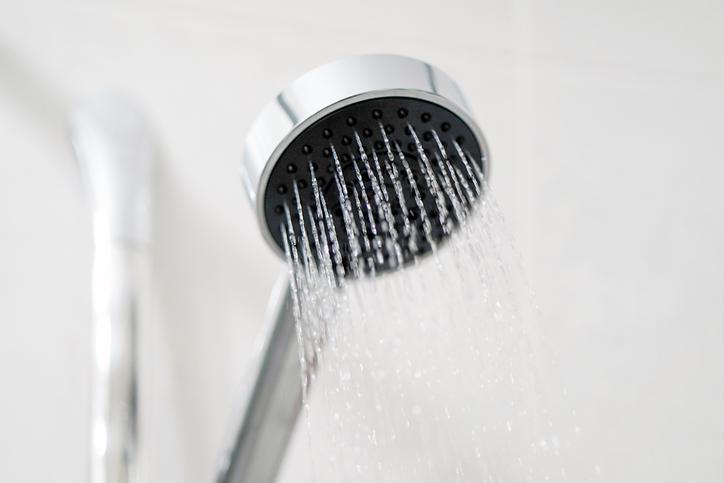
Even if you aren’t taking long showers or leaving the water running, standard showerheads and faucets flow at a rate that results in unintended water waste every time you turn the water on. Low-flow plumbing fixtures are designed to limit this waste, which saves you money on your water bill. They also reduce your energy bill by conserving hot water, so your water heater works less every day.
Read on and learn more about the benefits of low-flow fixtures, and why you should consider installing them.
How Do Low-flow Fixtures Work?
Without greatly reducing water pressure, low-flow plumbing fixtures use gravity-flow designs and pressure-assisting technology to use less water. For a fixture to be considered low-flow, it must not exceed a certain amount of gallons per minute of water flow depending on the fixture (the different types are detailed below).
Types of Low-flow Plumbing Fixtures to Add to Your Home
You can save water and water-heating bills every day by installing:
- Low-flow toilets. Compared to standard toilets that can use up to six gallons of water per flush (GPF), a low-flow toilet uses less than 1.5. Two types of low-flow toilets exist.
- A gravity flow toilet uses the natural force of gravity and water inside the toilet tank to force the waste in the toilet bowl through a toilet trap.
- A pressure-assisted low-flow toilet uses a pressurized water tank to quickly release a lesser amount of water into the toilet bowl to force the contents to flush.
- Low-flow shower heads. Standard showerheads use up to 2.5 gallons of water per minute (GPM), whereas low-flow shower heads use less than two. This saves a half-gallon of water every minute! There are two types of low-flow shower heads.
- An aerating showerhead forces water through small holes in a screen, which utilizes air mixed with water to produce a fine but powerful spray.
- A laminar showerhead limits the pressure and instead provides more of a rainfall-style shower stream.
- Low-flow sink faucets. A standard faucet uses an average of up to 3 GPM. Low-flow faucets don’t exceed 1.5 GPM. A low-flow faucet uses aerating technology to distribute the water without losing any pressure.
Should I Install Low-flow Fixtures?
Yes. Every homeowner can benefit from low-flow plumbing fixtures. Some states already require these types of fixtures to be installed in residential and commercial spaces. While not everyone can afford to install a low-flow toilet immediately, they should be on your long-term plan for replacement.
Not only do low-flow plumbing fixtures reduce your utility bills, but they also benefit society by conserving our water resources.
For most of these low-flow attachments, you can easily install them yourself at minimal expense. For anything more intensive like a low-flow toilet, or an entirely new fixture, consult with your local plumbing experts to provide you with advice, budget-conscious decisions, and overall maintenance needs you should consider before scheduling installation services.
Related Content: Save Water All Over the Home
Low-flow Fixtures: Advantages and Disadvantages
Advantages
- Reduced water waste. The most important aspect of low-flow fixtures is the significant reduction in water waste. This means the amount of water used in your home is more intentional and less costly in the long run.
- Positive environmental impact. Limiting your water waste doesn’t just help you, it limits your overuse of water sources that are vital to our ecosystems. By conserving water, we limit our draw from these sources and the energy it takes to treat wasted water.
- Lowered utility bills. Reducing water waste results in cost savings on your energy bills.
- Saved energy. Reducing your water waste will also help with other energy savings in your home, such as with your water heater, water filtration, and softening systems. These units will have less water to heat or filter, and in turn, waste less energy.
Disadvantages
- Higher upfront cost. As might be expected, low-flow plumbing fixtures can cost more than standard ones. However, the overall water and energy savings will quickly outweigh any additional cost.
- Higher installation cost. Because these fixtures require gravity or pressurized plumbing, you may need some pipe adjustments for them to operate as intended. This is especially true for any old or outdated plumbing systems (which should be upgraded anyway)! The installation costs will quickly be outweighed by overall water and energy savings.
- Potential increased toilet clogs. Though it’s still a potential concern, it’s much less likely for modern low-flow toilets to become easily clogged (due to technological upgrades).
How Much Can Low-flow Fixtures Save?
The EPA reports that replacing old, inefficient faucets and aerators with WaterSense-labeled models can save the average family 700 gallons of water per year.
And overall, low-flow fixtures can result in up to 60% water savings. So, depending on your standard water usage and your selected low-flow fixtures, you could save $200 or more a year on your water bill.
To put that in perspective, if every home in the United States replaced standard faucets and aerators with WaterSense-labeled models, 69 billion gallons of water and $1.3 billion in water and energy costs would be saved every single year. Amazing, right?
Reduce Water Waste with Low-flow Plumbing Fixtures
Looking to reduce unnecessary water waste in your home? Install low-flow plumbing fixtures with help from the experts at Benjamin Franklin Plumbing. We’ll provide you with all the information you need to make the best possible decision before installing low-flow plumbing fixtures in your home. Call us today at 1-877-BEN-1776 or book an appointment online.
